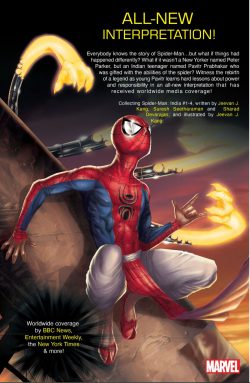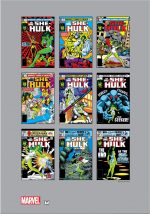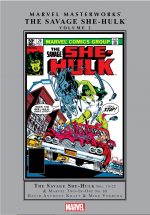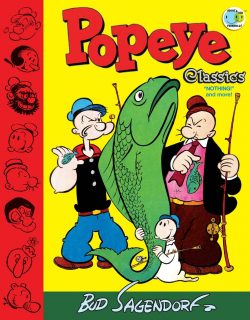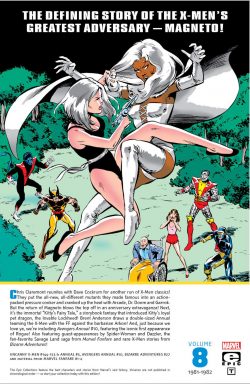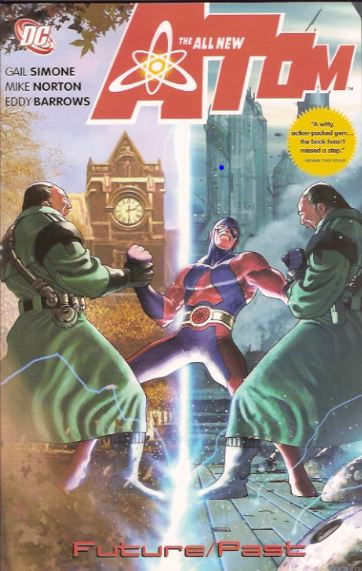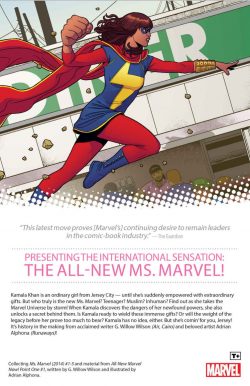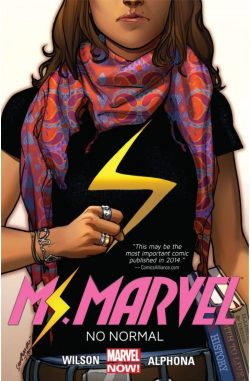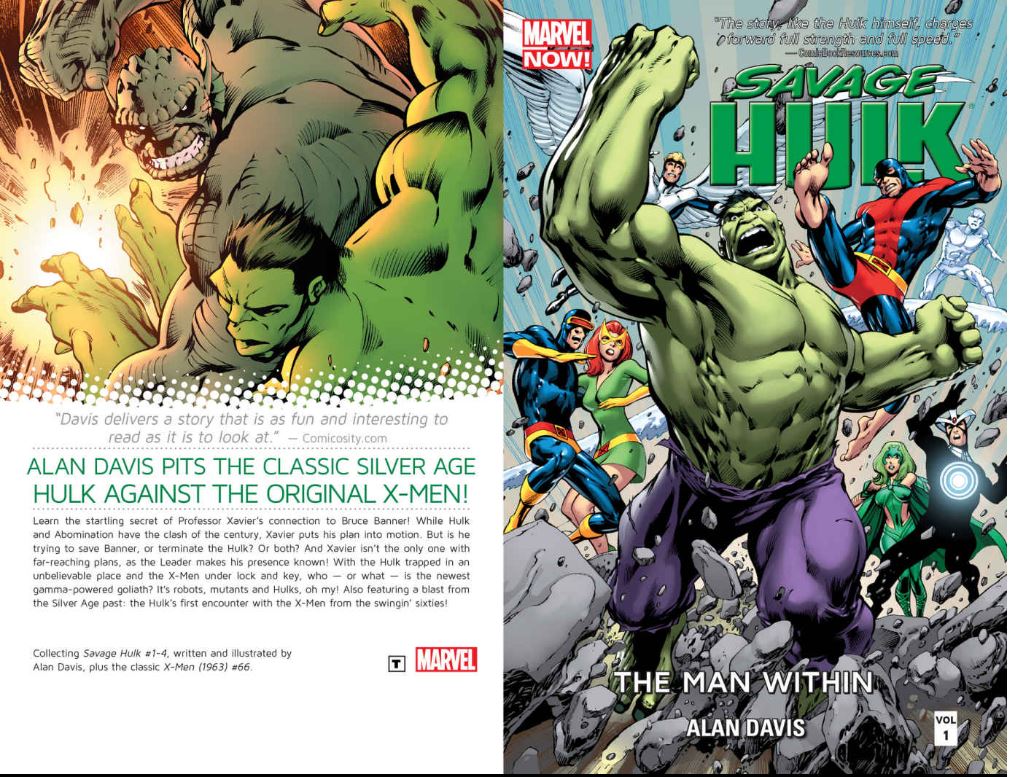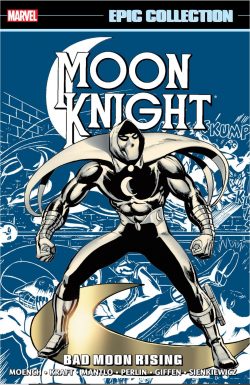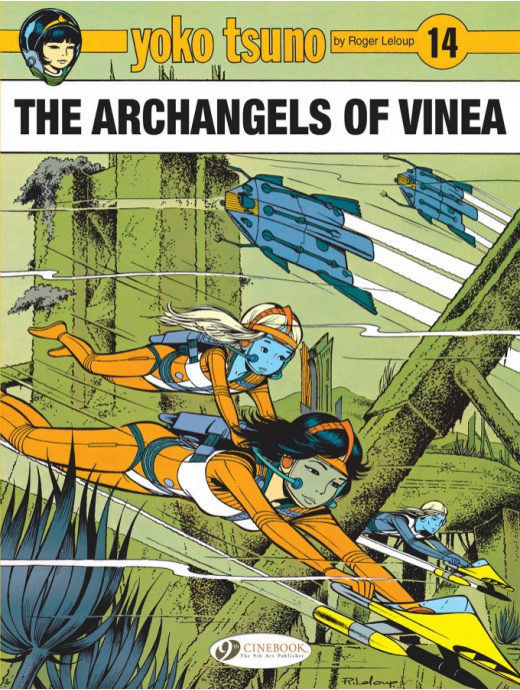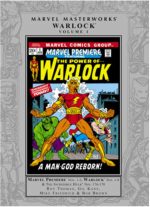

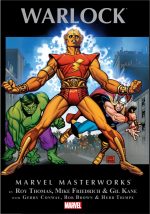
By Roy Thomas, Mike Friedrich, Gerry Conway, Ron Goulart, Tony Isabella, Gil Kane, Bob Brown, Herb Trimpe, John Buscema, Tom Sutton & various (Marvel)
ISBN: 978-0-7851-2411-5 (HB) 978-0-7851-8858-2 (TPB/Digital edition)
During the 1970s in America and Britain (the latter of which deemed newspaper cartoons and strips worthy of adult appreciation for centuries whilst fervently denying similar appreciation and potential for comics), the first inklings of wider public respect for the medium of graphic narratives began to blossom. This followed teen response to such pioneering series as Stan Lee & John Buscema’s biblically allegorical Silver Surfer and Roy Thomas’ ecologically strident antihero Sub-Mariner, a procession of thoughtfully-delivered attacks on drugs in many titles and constant use of positive racial role models everywhere on four-colour pages.
Comics were inexorably developing into a vibrant forum of debate (a situation also seen in Europe and Japan), engaging youngsters in real world issues relevant to them. As 1972 dawned, Thomas took the next logical step, transubstantiating an old Lee & Jack Kirby Fantastic Four throwaway foe into a potent political and religious metaphor.
Debuting in FF #66 (September 1967) dread mystery menace Him was re-imagined by Thomas and Gil Kane as a modern interpretation of the Christ myth: stationed on an alternate Earth far more like our own than that of Marvel’s unique universe.
Re-presenting Marvel Premiere #1-2, Warlock #1-8 and Incredible Hulk #176-178 – collectively spanning the tumultuous time between April 1972 and August 1974, this epic adventure also offers a context-soaked Introduction from originator Thomas.
It all began with April cover-dated Marvel Premiere #1, which boldly proclaimed on its cover The Power of… Warlock. Inside, the stunning fable – by Thomas, Kane & Dan Adkins – declared ‘And Men Shall Call Him… Warlock’: swiftly recapitulating the artificial man’s origins as a lab experiment concocted by rogue geneticists eager to create a superman they could control for conquest.
After facing the Fantastic Four, the manufactured man had subsequently escaped to the stars, later initiating a naive clash with Asgardian Thor over the rights to a mate before returning to an all-encompassing cosmic cocoon to evolve a little more…
Now the all-encompassing shell is plucked from the interplanetary void thanks to the moon-sized ship of self-created god The High Evolutionary. Having artificially ascended to godhood, he is wrapped up in a bold new experiment…
Establishing contact with Him as he basks in his cocoon, the Evolutionary explains that he is constructing from space rubble a duplicate planet Earth on the opposite side of the sun. Here he replays the development of life, intending that humanity on Counter Earth will evolve without the taint of cruelty and greed and deprived of the lust to kill…
It’s a magnificent scheme that might well have worked, but as the Evolutionary wearies, his greatest mistake intervenes. The Man-Beast was hyper-evolved from a wolf and gained mighty powers, but also ferocious savagery and ruthless wickedness. Now he invades the satellite, despoiling humanity’s rise and ensuring the new world’s development exactly mirror’s True-Earth’s. The only exception is the meticulous exclusion of enhanced individuals. This beleaguered planet has all mankind’s woes but no superheroes to save or inspire them.
A helpless witness to the desecration, the golden being furiously crashes free of his cocoon to save the High Evolutionary and rout the Man-Beast and his bestial cronies (all similarly evolved animal-humanoids called “New-Men”).
When the despondent and enraged science god recovers, he makes to erase his failed experiment but is stopped by his rescuer. As a powerless observer, Him saw the potential and value of embattled humanity. Despite all its flaws, he believes he can save them from the imminent doom caused by their own unthinking actions, wars and intolerance. His pleas at last convince the Evolutionary to give this mankind one last chance, and the wanderer is hurled down to Counter-Earth, equipped with a strange gem to focus his powers, a mission to find the best in the fallen and a name of his own… Adam Warlock…
Marvel Premiere #2 (July) sees the golden man-god crash to Earth in America and immediately win over a small group of disciples: a quartet of disenchanted teen runaways fleeing The Man, The Establishment and their oppressive families. His nativity and transformation leave him briefly amnesiac, and as Warlock’s followers seek to help, all are unaware that Man-Beast has moved quickly, insinuating himself and his bestial servants into the USA’s political hierarchy and Military/Industrial complex.
This devil knows the High Evolutionary is watching and breaks cover to introduce unnatural forces on a world previously devoid of superbeings and aliens. The result is an all-out attack by rat mutate Rhodan, who pounces on his prey at the very moment Colonel Barney Roberts, uber-capitalist Josiah Grey and Senator Nathan Carter track their missing kids to the desolate Southern Californian farm where they have been nursing the golden angel…
Men of power and influence, they realise their world has changed forever after seeing Warlock destroy the monstrous beast and ‘The Hounds of Helios!’
Doctor Strange was revived to fill the space in MP #3, as the gleaming saviour catapulted into his own August cover-dated title. Inked by Tom Sutton, Warlock #1 decreed ‘The Day of the Prophet!’: recapping key events and seeing the High Evolutionary safeguard his failing project by masking Counter-Earth from the rest of the solar system behind a vibratory screen.
With his mistake securely isolated from further contamination, HE asks Adam if he’s had enough of this pointless mission, and is disappointed to see Warlock’s resolve is unshaken. That assessment is questioned when the disciples take the spaceman to his first human city. Senses reeling, Warlock is drawn to bombastic street preacher and his psychic sister Astrella who are seemingly targeted by the Man-Beast. Of course, all is not as it seems…
Thomas’s plot is scripted by Mike Friedrich and John Buscema joins Sutton in illuminating ‘Count-Down for Counter-Earth!’: taking the biblical allegory even further as Warlock is captured by his vile foes and tempted with power in partnership with evil, even as his erstwhile disciples are attacked and deny him. Counter-Earth has never been closer to damnation and doom, but once more the saviour’s determination overcomes the odds…
The epic continues with Friedrich in the hot seat and Kane & Sutton reunited to steer the redeemer’s path. ‘The Apollo Eclipse’ begins with Adam and his apostles harassed by the increasingly impatient High Evolutionary following a breaching of his vibratory barrier by the Incredible Hulk and the Rhino (in Hulk #158 and reprinted in many volumes …but not this one). That episode is soon forgotten after they are targeted by another Man-Beast crony, hiding his revolting origins and unstable psyche behind a pretty façade.
The brute attacks a rocket base where Adam seeks to reconcile his youthful followers with their parents, but the subsequent clash turns into tragedy in #4’s ‘Come Sing a Searing Song of Vengeance!’ as the exposed monster takes the children hostage. Astrella senses that visiting Presidential candidate Rex Carpenter holds the key to the stalemate, but when he intervenes at her urging, unbridled escalation, death and disaster follow…
Although super-beings were excised from the world’s evolution, extraordinary beings still exist. Warlock #5 (April 1973) sees Ron Goulart write the aftermath as the doubt-riddled redeemer emerges from another sojourn in a recuperative cocoon. In the intervening months Carpenter has become President and ordered an increase in weapons testing to combat the incredible new dangers he personally witness.
Tragically, he also ignores warnings from government scientist Victor Von Doom, and when one military manoeuvre sparks ‘The Day of the Death-Birds!’ Adam is there to help when a dam is wrecked. His might is sufficient to stop the automated launch of swarms of robotic drones programmed to strafe ground-based beings, but cannot stop the grateful citizenry turning on him when President Carter declares him a menace to society…
Friedrich scripts Goulart & Thomas’ plot and Bob Brown joins the team as penciller in #6 as Warlock battles the army and Doom contacts fellow genius Reed Richards for help. However, the Latverian is unaware of a shocking change in his oldest friend who is now ‘The Brute!’: a mutated cosmic horror enthralled by the malign thing running the White House and now ordered to ambush Warlock as Astrella brings him to truce talks…
It’s all a pack of lies and a trap. As the Golden Gladiator defeats Richards, enraged mobs egged on by the President move on Warlock’s growing band of supporters. Now, though, the alien’s very public life-saving heroics have swayed fickle opinion and Carter is compelled to reverse his stance and exonerate Warlock. Even this is a ploy, allowing him to set the energy-absorbing Brute on the redeemer in ‘Doom: at the Earth’s Core!’
Beyond all control, Richards’ rampage threatens to explode Counter-Earth, and only the supreme sacrifice of one of Adams’s constantly dwinling band of supporters saves the planet…
Warlock’s rocky road paused with the next issue. Cancelled with #8, Friedrich, Brown & Sutton dutifully detailed ‘Confrontation’ in Washington DC as the supposed saviour’s supporters clashed with incensed cops. Intent on stopping a riot, Warlock finds his work magnified when Man-Beast’s New-Men minions join the battle. The saga then ends on an eternal cliffhanger as Warlock finally exposes what Carpenter is… before vanishing from sight for 8 months…
The aforementioned Hulk #158 had seen the Jade Giant dispatched to the far side of the Sun to clash on Counter-Earth with the messiahs enemies. Although excluded here, the 3-issue sequel it spawned was concocted after the Golden Godling’s series ended.
When the feature returned the tone, like the times had comprehensively changed. All the hopeful positivity and naivety had, post-Vietnam and Watergate, turned to world-weary cynicism in the manner of Moorcock’s doomed hero Elric. Maybe that was a harbinger of things to come…?
The cosmic codicil closing this initial collection came after the Hulk’s typically short-tempered encounter with the Uncanny Inhumans and devastating duel with silent super-monarch Black Bolt. Following the usual collateral carnage, the bout ended with the Gamma Goliath hurtling in a rocket-ship to the far side of the sun for a date with allegory, if not destiny.
The troubled globe codified Counter-Earth had seen messianic Adam Warlock futilely battle Satan-analogue Man-Beast: a struggle the Jade Juggernaut learned of on his previous visit. Now he crashed there again to complete the cruelly truncated metaphorical epic, beginning in ‘Crisis on Counter-Earth!’ (Incredible Hulk #176, June 1974) by Gerry Conway, Herb Trimpe & Jack Abel.
Since the Hulk’s last visit Man-Beast and his animalistic flunkies had become America’s President and Cabinet. Moving deceptively but decisively, they had finally captured Warlock and led humanity to the brink of extinction, leaving the would-be messiah’s disciples in utter confusion.
With the nation reeling, Hulk’s shattering return gives Warlock’s faithful flock opportunity to save their saviour in ‘Peril of the Plural Planet!’ but the foray badly misfires and Adam is captured. Publicly crucified, humanity’s last hope perishes…
The quasi-religious experience concludes with ‘Triumph on Terra-Two’ (Conway, Tony Isabella, Trimpe & Abel, Incredible Hulk #178). Whilst Hulk furiously battles Man-Beast, the expired redeemer resurrects in time to deliver a karmic coup de grace before ascending from Counter-Earth to the beckoning stars…
Adding temptation at the end is a gallery of Kane pencil page layouts and a half dozen inked pages plus the Marvel Bullpen Bulletins page that first announced Warlock’s debut.
Ambitious and beautiful to behold, the early Warlock adventures are very much a product of their tempestuous, socially divisive times. For many, they proved how mature comics might become, but for others they were simply pretty pictures and epic fights with little lasting relevance. What they unquestionably remain is a series of crucial stepping stones to greater epics and unmissable appetisers to Marvel Magic at its finest.
© 2020 MARVEL

